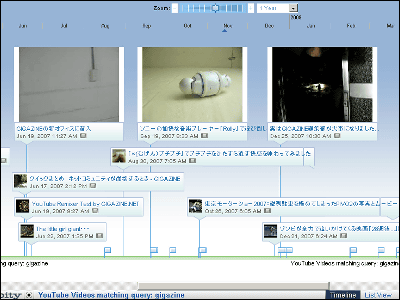'Visual story writing' promotes creativity by incorporating visual expressions in addition to text when writing and conceiving a story.
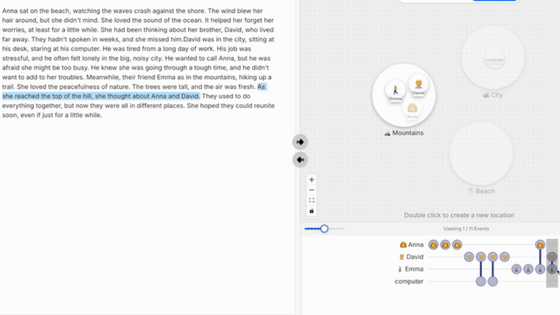
Researchers at the University of Montreal in Canada have published a paper on ' visual story writing ,' an approach that involves writing while controlling the visual expression of a story. The paper proposes a theoretical framework for visual story writing and a foundational tool to support story writing in practice.
Visual Story-Writing: Writing by Manipulating Visual Representations of Stories
Visually grasping narrative patterns is important for improving a story. There are many analyses that focus on the 'shape of a story,' such as the idea that ' a good story can be visualized as a line graph ,' which was the starting point for analyzing the 'shape' of a story, and research on ' emotional arcs ,' which show the emotional changes in a novel.
In addition, when writing a story, you need to manage various moving elements, such as the character relationships, the story's chronological order, scene changes, etc. Visual story writing is an approach that visualizes ideas and plots to help you confirm and manage such stories.
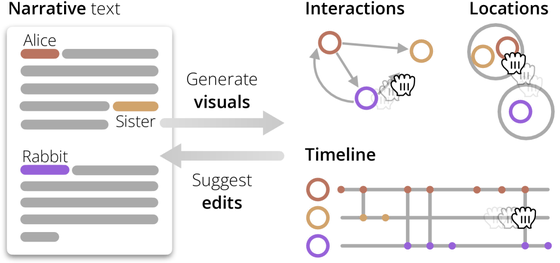
The researchers classified the operator mechanisms for visualizing stories into 'Position,' which spatially arranges elements such as character locations; 'Association,' which adds new elements and associates them with existing elements; 'Connect,' which adds actions or relationships between elements; and 'Unfold,' which duplicates elements for further refinement or organization. Using this framework, they designed an interactive editing system that not only analyzes and visualizes existing story structures, but also acts as a supporting mechanism for AI to interpret the analysis results and generate suggested text edits.
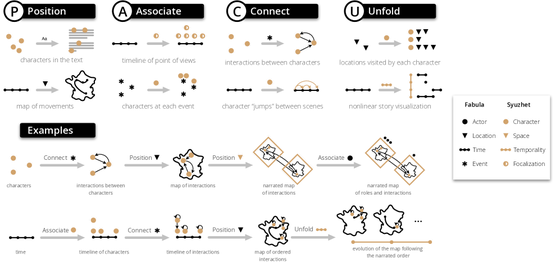
The resulting visual storywriting prototype tool is implemented as a web-based editor, and details are available on GitHub, where you can download the code.
GitHub - m-damien/VisualStoryWriting: Writing by manipulating visual representations of stories
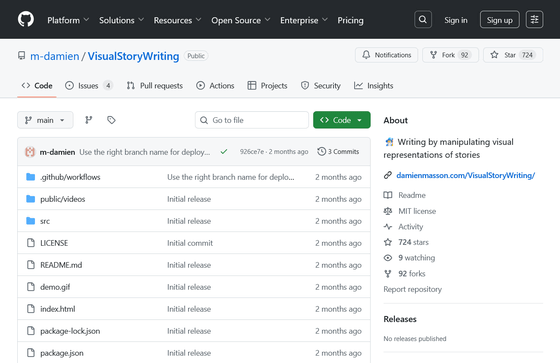
The main uses of visual story writing are:
・Event timeline
Events and scenes that occur in a story are displayed as chronological cards. It is designed to handle two types of order: the order in which the story is told and the actual chronological order. You can rearrange events or select scenes and edit their details from the automatically recognized timeline.

Interaction View
Edit the characteristics of characters and view the interactions between them in a node-link diagram. By dragging edges, you can add information such as 'new actions or relationships have occurred.'

・Spatial view
It visualizes a spatial view of the story's locations, along with descriptions of what happened at each location, the route of travel, etc. If there are any contradictory statements due to travel, it will suggest changes to the text to resolve the contradiction.

To test the effectiveness of visual story writing, the researchers recruited eight creative writers and provided each participant with an existing short story and a revision task, such as changing a character's purpose. Using a prototype visual story writing tool for revision, the researchers concluded that the visualized view helped participants identify areas for revision, made it easier to find relevant references, and made it easier to see flaws in story patterns and causality, leading to overall reconstruction, enabling higher-level revisions.
In the second experiment, a separate group of participants who had not participated in the first experiment actually used a visual story-writing tool to create new stories. As a result, participants reported that the tool promoted idea exploration and found it easier to manage spatial and relationship manipulations than when using text alone. However, in some cases, the ideas generated by the AI required revisions for consistency of style and appropriateness of details.
The idea behind visual story writing is to use a tool that even beginners and amateur writers can use to create stories. It should be noted that the participants in the experiment were writers with several years of experience, so it has not been verified whether beginners can use the tool and create smoothly. Also, visual story writing is intended for the creation of stories that include concrete elements such as characters and places, and is applicable not only to novels but also to the writing of films, games, and plays. However, the paper does not clarify how it works for works with fewer developments or non-narrative writing.
The researchers aim to expand the visual storywriting framework in future research and explore visual manipulations that can be applied to a wider variety of stories. Furthermore, because the prototype was primarily evaluated for short and medium-length stories, supporting longer stories is also a future challenge.
Related Posts:
in Software, Posted by log1e_dh






